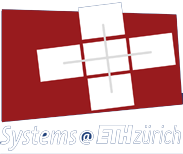Publication
Proceedings of the NAACL-HLT 2019, Minneapolis, USA., June 2019
Previous research shows that eye-tracking data
contains information about the lexical and syntactic
properties of text, which can be used to
improve natural language processing models.
In this work, we leverage eye movement features
from three corpora with recorded gaze
information to augment a state-of-the-art neural
model for named entity recognition (NER)
with gaze embeddings. These corpora were
manually annotated with named entity labels.
Moreover, we show how gaze features, generalized
on word type level, eliminate the need
for recorded eye-tracking data at test time. The
gaze-augmented models for NER using tokenlevel
and type-level features outperform the
baselines. We present the benefits of eyetracking
features by evaluating the NER models
on both individual datasets as well as in
cross-domain settings.
@inproceedings{abc,
abstract = {Previous research shows that eye-tracking data
contains information about the lexical and syntactic
properties of text, which can be used to
improve natural language processing models.
In this work, we leverage eye movement features
from three corpora with recorded gaze
information to augment a state-of-the-art neural
model for named entity recognition (NER)
with gaze embeddings. These corpora were
manually annotated with named entity labels.
Moreover, we show how gaze features, generalized
on word type level, eliminate the need
for recorded eye-tracking data at test time. The
gaze-augmented models for NER using tokenlevel
and type-level features outperform the
baselines. We present the benefits of eyetracking
features by evaluating the NER models
on both individual datasets as well as in
cross-domain settings.},
author = {Nora Hollenstein and Ce Zhang},
booktitle = {Proceedings of the NAACL-HLT 2019},
title = {Entity Recognition at First Sight: Improving NER with Eye Movement Information},
venue = {Minneapolis, USA.},
year = {2019}
}

